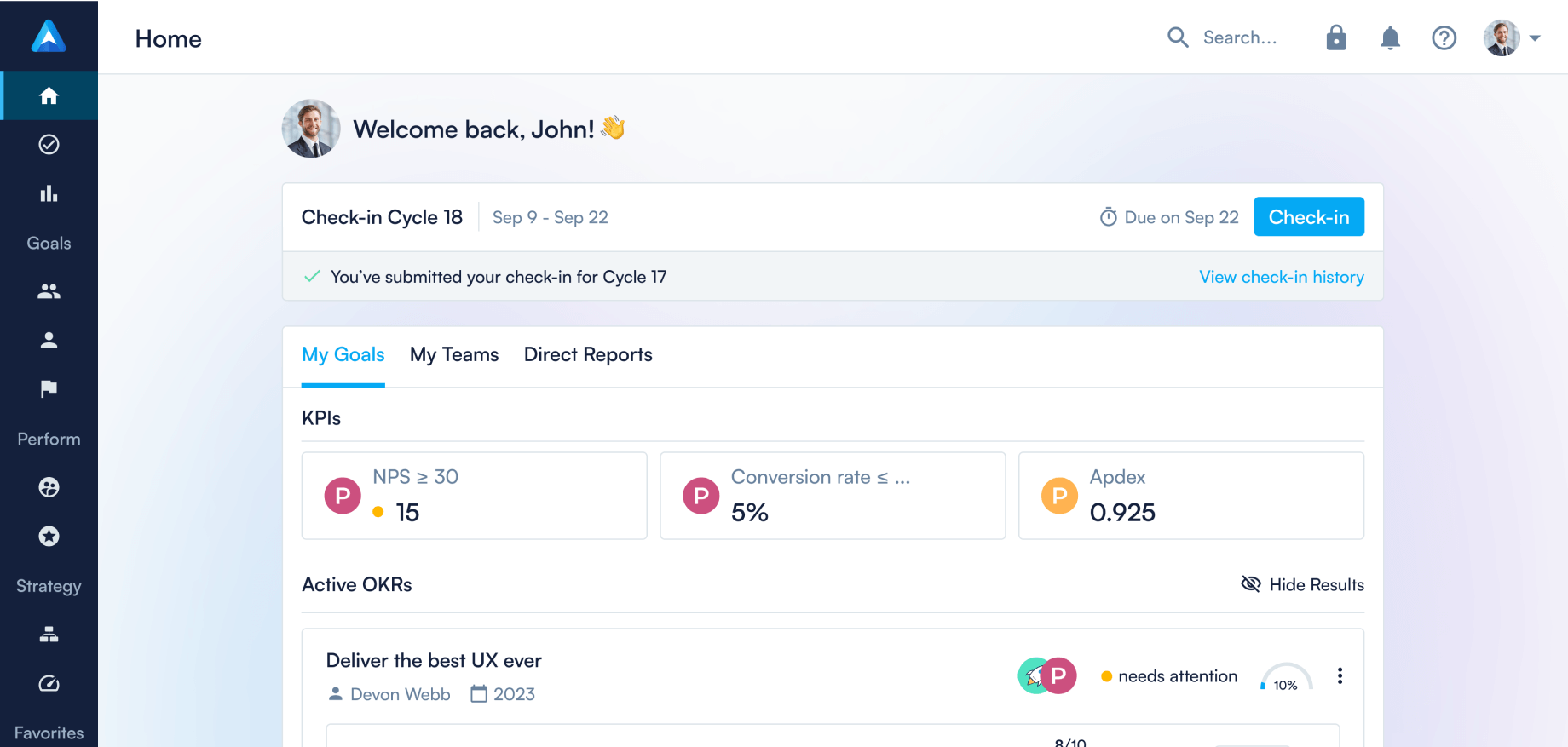
Why not abandon stretch goals?

Rather watch a video? Click here!
Stretch goals and OKRs, the two seem almost inseparable. On every OKR blog, you’ll find articles on (the benefit of) stretch goals.
The Perdoo Blog isn’t any different: I’ve described the benefits of stretch OKRs in this article. That article is already two years old, and since then we’ve learned two important things:
- Stretch goals are cultural.
- Stretch goals create complexity.
Let’s take a closer look at those two learnings.
Stretch goals are cultural
Perdoo’s customer base is equally split between North America and Europe. Although we don’t have any hard facts (our evidence is mostly anecdotal), it seems that North American organizations find it easier to work with stretch goals than European ones.
Of course, there are European organizations that love stretch goals, and there are American companies that dislike them. Whether or not you like them, and whether or not they work for you, depends on your company culture and not the country you are located in.
When stretch goals are not working for your company’s culture, you’ll notice that people stop putting effort into deciding what is the right target value for their Key Results. Because a target can be a stretch, it kind of feels like every target value is ok. Eventually, stretch goals become a joke and no one seems to care anymore whether or not an OKR is “achieved” (i.e. progress is at least at 70%). When this happens, you know that stretch goals are not right for your culture. You’re better off with setting attainable targets that everyone can then commit to (in this case an OKR is only considered achieved once it hits 100% progress).
Stretch goals create complexity
Whether or not stretch goals/OKRs fit your company culture, they often create complexity. Complexity is not always a bad thing, but when you’re new to OKR, you want to keep things simple and remove everything that could be a potential barrier for a successful implementation.
Here’s why stretch OKRs create complexity:
- For each and every Key Result, it's more difficult to decide what the right target value should be. Every time you have to ask yourself: Is this a stretch? Should we stretch ourselves further?
- Not all Key Results and/or OKRs will be compatible with stretch OKRs. For some Key Results or OKRs, any progress below 100% is simply unacceptable.
- Performance becomes difficult to review. Yes, you should be able to get to at least 70% progress for an OKR. But what if the team has stretched themselves (too much)? Perhaps we should still be very happy with the progress made? You risk ending up in discussions around just how much of a stretch it was.
You can avoid all this complexity by setting OKRs that everyone feels are reasonable and attainable. Once your organization has familiarized itself with OKR, you can enable stretch OKRs for a quarter and see if you’re ready for them.
Disabling stretch OKRs
Because stretch goals/OKRs are clearly not suitable for every organization, we are now offering our customers the opportunity to disable stretch OKRs.
In fact, we’re even disabling stretch OKRs for our own OKR program! We like them, and we certainly see their value, but one of our company values is to keep things simple—and stretch OKRs don’t fit that value.
If you want to disable stretch OKRs for your Perdoo account:
- Click on Configure (gear icon in the left sidebar).
- Go to Features on the General tab.
- Uncheck Stretch OKRs and hit Submit.

Watch video
FAQ
Continue reading...


Why you shouldn’t outsource OKR to HR


How to embed goals in performance reviews






